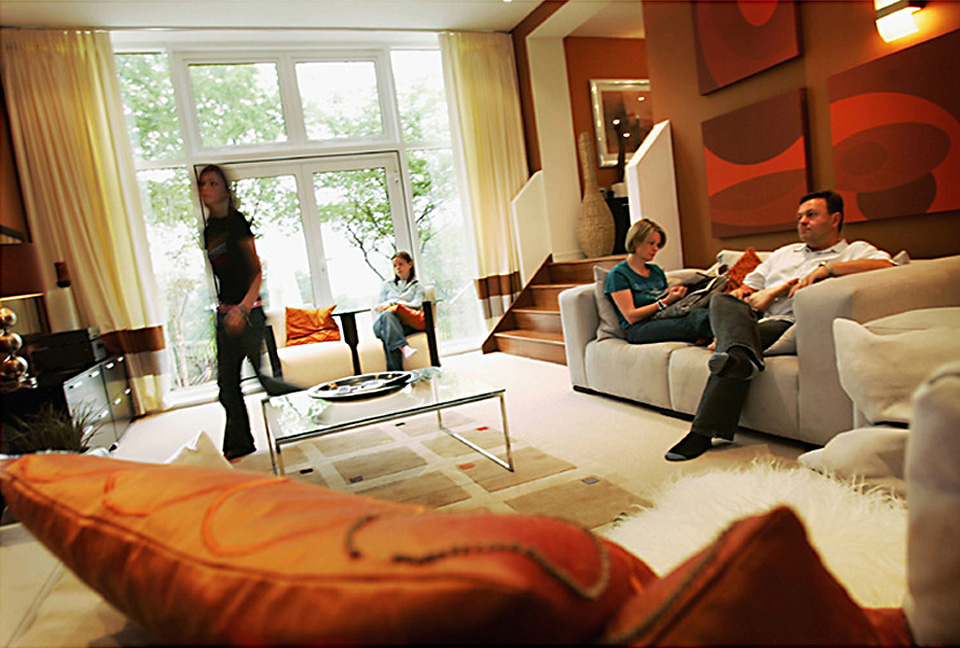Live large in small spaces
With real estate at a premium in our city centre, the squeeze factortranslates instantly into smaller living spaces for downtown dwellers.
BY THE VANCOUVER PROVINCE NOVEMBER 30, 2007
With real estate at a premium in our city centre, the squeeze factor translates instantly into smaller living spaces for downtown dwellers.
And it doesn’t stop there. Today, even the suburbs have become urban centres, so lots of suburbanites have got the no-room blues, too.
What to do? We asked the experts — Brian Ball of Yaletown Sofa Co., John Palliser of Urban Barn, designers Mae Suffron and Doris Wutzke of Creative Design Works and Kari Henshaw of Insight Design Group — how to live large in a small space.
MAKE IT MULTITASK
If your furniture’s not multi-functional, it’s probably the wrong furniture. Yaletown Sofa’s mandate, to appeal to the urban-condo market with small and convertible pieces, has proved so popular that in less than 18 months the chain has expanded to eight Lower Mainland stores.
“The most important factor in fitting a smaller space is multi-functionality,” says Denman Street branch manager Brian Ball. “Everything should serve at least Iwo purposes if it’s going to take up a portion of your valuable real estate.”
In a 500-square-foot apartment, a bed, dining table and sofa can take up to 150 square feet of space, he points out, which is almost one third of your overall space. “These items can easily function as storage, a second bedroom, an office and more if you choose the right pieces.”
Popular at Yaletown are chair/single-bed fold-outs, ottoman/single-bed fold-outs in fabric or in leather, and “flip” ottomans, in four colours of leather.
John Palliser of Urban Bam agrees multi-function is the way to go. One of Urban Barn’s most popular products is its Hide Leather Ottoman, a small leather cube that opens up for added storage and has a top that flips over and doublesas a serving tray. A new addition is the Stash Ottoman, which is the same idea as the Hide but bigger.
Nesting tables, 100, are handy. “These little sets are perfect for adding functional space that easily hide away when not in use,” says Palliser. At Urban Barn, Larissa Nesting Tables are a good choice.
Kari Henshaw of Insight Design Group, which has been designing condo units throughout the Lower Mainland and Canada for more than 10 years, says to “consider bench seating that can be used at the dining table and then turned around to be used in the living area as a type of ottoman.”
“A cocktail table can have storage Inside or ottomans underneath that can be pulled out for additional seating.” Henshaw says.
Mae Suffron and Doris Wutzke of Creative Design Works also suggest beds with mattress storage, as well as upholstered ottomans that can serve as coffee tables, extra seating and provide storage space.
BUILD IT IN
The secret to maximizing space in many suites is to allow for custom built-in millwork, says Henshaw. “The cost may be a little more, but it will certainly give you the ‘bang for your buck.’ In bedrooms, make use of the vertical space and have custom built-in millwork installed surrounding the bed wall. You can also incorporate storage under or in your bed.”
Built-ins are an excellent way to gain storage and to allow whole areas to become multi-purpose. Say Suffron and Wutzke. “Storage rooms can double as home offices by building in a desktop and simple shelving,” says Suffron. “Having built-ins installed with drawers and shelving in main living areas allows you to house your entire entertainment system as well as providing display space and storage.”
Selecting furniture that is light in appearance. too, is a natural. says Henshaw. “An example of this is to have a custom built-in workstation,” she says. “This is a great investment in that it allows for a perfect fit within the space so that the furniture doesn’t look too heavy and out of scale.”
With real estate at a premium in our city centre, the squeeze factortranslates instantly into smaller living spaces for downtown dwellers.
BY THE VANCOUVER PROVINCE NOVEMBER 30, 2007
SMALL IS THE NEW BIG
Small-scale furniture Is a must, says Henshaw. As well: “In kitchens, use European-sized – small and sleek – appliances, full-height cabinets and shallow depth pantries.”
Take advantage of the latest Innovations in electronics. says Ball. “Who needs a separate computer monitor, television and stereo when you can easily use a wall-mounted flat-screen with a wireless keyboard, and wireless speakers to create a seamless and very functional system?”
Henshaw agrees. “Large TVs and TV cabinets don’t all it anymore,” she says. · Update 10 a fully integrated name entertainment system.”
As well, she points out. closets in some condos are nearly non-existent. Closet organizers are key to making the best use of space –– and in kitchens, there are many storage solutions available for inside cabinets.
In bathrooms, she says, drawers In place of cabinets under the vanity are quick fixes.
TRICK THE EYE
Mirrors visually expand your space, say Suffron and Wutzke. “Add drama to your entry or dining area by simplyframing out the entire wall and inserting a mirror. Mirrors can also be used above kitchen cabinetry to visually brighten a normally dark area.”
Mirrors work, says Palliser. “However. simply hanging a mirror anywhere may not do the trick. Try hanging a mirror where you don’t see your reflection most of the time to help create the Illusion.”
Use invisible furniture. says Palliser. “Furniture made from Lucite. dear acrylic or glass has become very popular lately. These contemporary-styled pieces really open up a room and add the illusion of space,” he says. At Urban Bam, look for the Lucid Barstool and the Prism Chair.
If you have a low or even average ceiling, anything that draws the eye up to that ceiling is going to visually · pull it down,” making the space feel shorter, says Ball. “To make it seem higher, use white paint as it is the most neutral, and even though it’s not for everyone, a gloss or semi-gloss paint makes the ceiling reflective and thus disappear.”
COLOUR OR NOT
Never be afraid to use colour In your space, says Ball. However, to keep the flow of a space, try to use one or two similar shades throughout so the eye moves easily from wall to floor to sofa . “Avoid high contrast between furnishings and walls. Colour can then be used to punch out a single focal point, like a fireplace or dramatic work of art.”
Suffron and Wutzke also say the use of tone-on-tone chromatic colour schemes is an important
factor when living in small spaces. but suggest creating dramatic areas by using darker colours for bathrooms, and yes, introduce colour through artwork and accessories.
Too many colours break up the space, agrees Henshaw. “We like to keep our paint colours neutral, and give a punch of colour through art and accessories.”
Sticking to monochromatic pieces also makes changing things easy because the furniture in one room can be moved to another and It will still match, says Palliser.
SPEND IT
The best point to remember is that “God is in the delails,” says Ball. “Not only are you in a small space, but everything that you have in that space will be seen from close up and more often. Spend the money on a beautiful, well-made piece as opposed to several less expensive pieces.”
Focus on luxury, says Palliser. “Make a statement! When designing a small space, it can be easier to focus on quality. Splurge on that spectacular coffee table or the set of to-die-for, lamps you have been eyeing and then shop for deals on the accents.”
© (c) CanWest MediaWorks Publications Inc.






